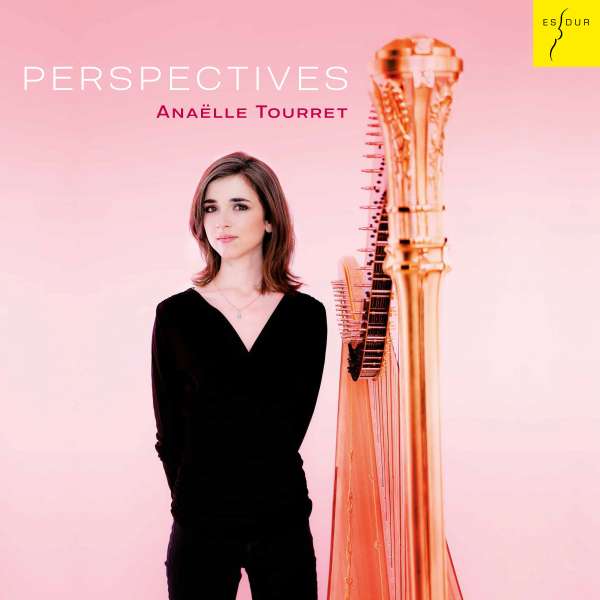Die französische Harfenistin Anaëlle Tourret, Solo-Harfenistin des NDR Elbphilharmonie Orchesters und Assistentin von Xavier de Maistre an der Hochschule für Musik und Theater in Hamburg, legt mit ihrer ersten Solo-CD ein anspruchsvolles Programm vor, das sie zum spannenden Musikerlebnis macht.
Gleich in André Caplets 1924 entstandenen Divertissements pour Harpe lässt sie mit einer ungewöhnlichen Dynamikkontrolle aufhorchen. Das klingt als säße sie am Fader eines Mischpults und ergibt packende Nuancen. Hier appliziert sich schon der Titel der CD, anders als wohl beabsichtigt, denn es klingt tatsächlich so, als würde die Harfe immer wieder die Perspektive ändern.
Dieselbe phänomenale Kontrolle der Dynamik und auch der Farben sowie ein äußerst spontan und inspiriert wirkendes Spiel lassen Paul Hindemiths Sonate für Harfe und Benjamin Brittens Suite for Harp rhetorisch bedeutsam werden. Nach einer drängenden Ouvertüre scheint die Toccata in Brittens Suite wie ein Blatt im Herbstwind zu flattern, worauf sich das Notturno so geheimnisvoll entwickelt, dass man den Atem anhält. Eine fein differenzierte Fuge führt zu dem Hymnus, dessen Tiefe bestimmt noch nicht oft so fesselnd ergründet wurde wie von Anaëlle Tourret.
Auch in Heinz Holligers Präludium, Arioso und Passacaglia wirkt Tourrets ‘Ton und Lichtmischpult’ wahre Wunder. Und so ergibt das alles eine absolut faszinierende Harfen-CD, die ich nur nachdrücklich empfehlen kann.
With her solo debut CD French harpist Anaëlle Tourret, principal harpist of the NDR Elbphilharmonie Orchester and assistant to Xavier de Maistre at the Hochschule für Musik und Theater in Hamburg, presents a demanding program, which she makes an exciting musical experience.
In André Caplet’s Divertissements pour Harpe, written in 1924, she immediately attracts attention with her unusual dynamic control. It sounds as if she were sitting at the fader of a mixing console, producing gripping nuances, and here even the title of the CD applies itself differently than probably intended, because it actually sounds as if the harp is constantly changing perspectives.
The same phenomenal control of dynamics and also of colors, as well as extremely spontaneous and inspired playing, make Paul Hindemith’s Sonata for Harp and Benjamin Britten’s Suite for Harp rhetorically significant. After an urgent overture, the Toccata in Britten’s Suite seems to flutter like a leaf in the autumn wind, whereupon the Notturno develops so mysteriously that one holds one’s breath. A finely differentiated Fugue leads to the Hymn, whose depth has certainly not often been fathomed as captivatingly as by Anaëlle Tourret.
Tourret’s ‘sound and light mixer’ also works wonders in Heinz Holliger’s Prelude, Arioso and Passacaglia. And so it all adds up to an absolutely fascinating harp CD that I can only strongly recommend.


















